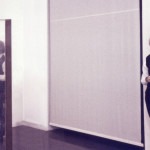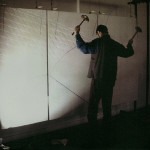Foreword
First of all, the “field of experience” is the one referring to what is common to everybody’s way of living, that is, real and imaginative perceptions as well as reflections on the self and on events. According to the present philosophical and scientific thought, in the everyday process of experiencing and knowing the living being defines itself as a subject body (with a “building mind”) in close relation to the real environment.
One can-not escape this; it is an illusion to think of oneself as a mirror of the world and to represent it accordingly, while science and art are developing various and authentically great new creations, which are meaningful and coherent in themselves.
Here, in this series of manifestations both literary and art works are supported by this idea of “antirepresentation”, which has been debated in the journal Campo (by Fiorani, Leonetti, Martignoni, by other members of the editorial staff – Colonetti, Mascitelli – and other major contributors), so far as to broach the topic of ‘second cybernetics’ and the thoughts of some 20th-century theoreticians, such as Saussure and Freud, Bachtin and Merleau-Ponty. Although they have a peculiar and diverse subjectivity, working in different art fields and with more than one generation of people, the exhibiting authors underwrite and circumscribe the fundamental importance given nowadays in the new sciences (as well as in some political reasoning) to the relation between the living being and its territory and, as a consequence, between language and things, text and context.
If we read works by Balestrini, a genius of poetic avant-garde because he has actually succeeded in putting so closely together enraging a-syntactic forms (“evviva la”) with implacable semantic figures ( “trasformazione/turbamento”), this relation to the social and historical context and to the natural one becomes obvious. Milli Graffi discloses the present inadequacy of space and place. Something similar occurs to some of the newest poets – Cepollaro, Voce, Bàino – provocatory with their idioms, their linguistic hybridism and use of citations. As far as the figurative arts are concerned, in this exhibition of a trend by examples we are confronted with one of Amalia Del Ponte’s achievements (not shown at the Venice Biennale): a bow has shot an invisible arrow: the inventive discovery is revealed by hollowed-out rhomboids in the travertine, denoting the aerial space animated by the arrow’s flight. Bonito Oliva has commented on her works by saying that she “tends to grasp the intelligence of matter”.
Mauro Staccioli’s massive sculpture, an immense triangle with ascensional motion, already installed inside the Mudima Foundation a few years ago, with its powerful strength refers to the same principio and trend.
Piraccini, one of the newest artists in Milan, theorizes and invents now in the terrestrial and celestial space, the outbursts of elementary particles, marking their lives and their deaths or transformations. Moreover, she starts to very rigorously examine the body just as it is, an empty field of energy.
There will be also Leonetti’s incursions into art and cinema. Of the two masters of experimentalism, Dadamaino and Arnaldo Pomodoro, who are also editors of the journal, we propose a historical opening. Dadamaino exhibits his latest 1995 works, where he cancels any known form to render the spinning connections of stories with a “controlled daring attitude” (Dorfles) and reaches, with hand accuracy, a “pulsing sign flow” (Fioroni); as for Arnaldo Pomodoro, he emphasizes bare – just before New York – a fundamental issue of today, something he realized in 1988: new sceptres, the antennae of the media together with the dreams of the past. The uncertain situation in which we are living today has been investigated in the movies (wondering “which world?” or “how do we reply to the media or the market?” ), for instance, by the newest director Amati, who has debated two books to their extremes: one being by the profound Poe, the other a managerial handbook.
The opening work is a political documentary movie, dating back to 1971 and filmed almost illegally by Leonetti and Pomodoro. The movie raised an outcry in Pesaro and was subsequently stolen. We have found a little damaged copy it deals with the trial against “Lotta Continua”.
At 10,30 p.m. Bonito Oliva will start his act in his very own way.
As scholars of the 20th-century have already pointed out, only this language, that we now define as non-representational (in so far as it excludes illusions, it is aware of not being able to reproduce perspectives and the world) can still replay to the absurdity and the superficiality of the present day.
Francesco Leonetti

